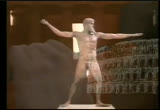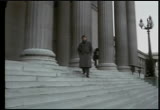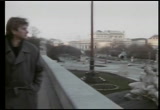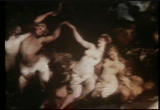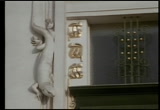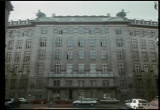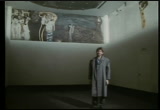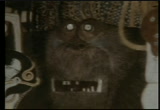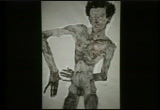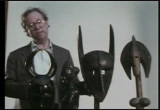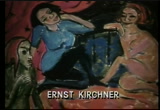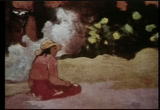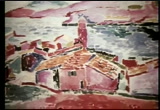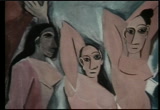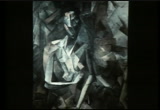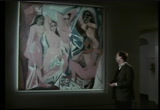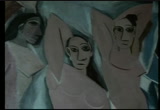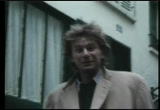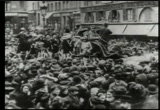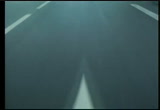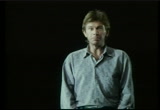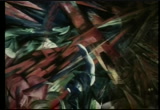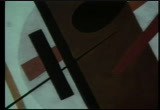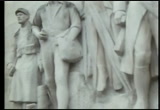tv Deutsche Welle Journal LINKTV April 24, 2013 2:00pm-2:30pm PDT
2:00 pm
annenberg media ♪ gam made possie by the financial support of... and the following individuals and foundations... corporate funding for art of the western world is by movado, makers of the movado museum watch, the watch dial design in the permanent collections of museumsthrougut the. captioning made possible by the annenberg/cpb project
2:01 pm
the first 15 years of the 20th century saw changes in the theory and practice of art among modern artists in western europe which were so remarkable they've been compared with the great advances made in science and technology at the same time. there's no simple explanation for why this period was so dynamic, nor was the dynamism confined to one center. although paris had long been the focus of modernism,
2:02 pm
it had its rivals in brussels, barcelona, and munich. but it was a time of growing tension in western culture, of continued rapid industrialization, of imperialism abroad and rivalry within the states of europe, and, at the same time, scientific breakthroughs, which not only questioned our way of seeing the world, but the very nature of reality itself-- planck's quantum theory, einstein's theory of relativity, freud's work on psychoanalysis. it was in 1900 that freud wrote his interpretation of dreams, a prophetic work in view of the tragedies of modern western history. freud wrote and published it here in vienna. vienna, 1900, was one of the intellectual and artistic centers of europe. in tracing modern art's emergence in the 20th century,
2:03 pm
vienna embodies, perhaps more than any other city, the struggle to break with the ossified traditions of the 19th century to achieve a modern art, an art for the 20th century. turn-of-the-century vienna was a prosperous and technologically advanced society, peaceful and secure, the center of the austro-hungarian empire, ruled over for more than 50 years by the last of the hapsburgs-- emperor franz josef. franz josef symbolized permanence and stability. he cultivated a status quo, based on a bureaucracy and state censorship, which exerted a virtual strangle hold on the capital's cultural imagination. artistic life was dominated by the baroque history painting of the fine arts academy. architectural endeavor aimed at creating a sense of continuity with a grand past. the town hall-- late gothic...
2:04 pm
the hofburg theater-- high baroque... the parliament buildings-- classical greek. against this background, artists and architects across europe sought new ways of looking, new forms of building, that would embody the idealism and progress of the new age. in vienna, these hopes found expression in this building, the viennese sezession building, designed by josef maria olbrich in 1898. in its simplicity and its distinctive ornamental dome, it's an early attempt at modern architecture. the building housed a group of artists and architects who, in 1897, seceded, or broke away,
2:05 pm
from the reactionary academy of fine arts to form their own organization--the sezession. surprisingly, the emperor franz josef himself opened the first exhibition here. elements of the notoriously conservative viennese bourgeoisie were quick to buy from the exhibitors and to commission its architects. but, at heart, it remained an antiacademic organization. one of the founder members of the sezession was the architect otto wagner. his design for the postal savings bank of vienna confidently transports the principles of the sezessionists into the 20th century. it's a classical building, but there's no vainglory, no false monumentality. the use of materials takes pride of place-- the newest, including aluminum, combined with the oldest, including marble-- to produce a result startling in its modernity, given its date of 1904.
2:06 pm
but most of all, it was the sezessionist painters and their successors-- first klimt, then schiele and kokoschka-- who possessed the power most effectively to disrupt the conservative values of viennese society. in 1902, for the 14th sezessionist exhibition, gustav klimt, most important of the sezessionist painters, painted this friezelike work in homage to one of the great figures of the 19th century-- beethoven. the beethoven frieze is concerned with the highest ideals of art. it portrays the conflict between the human desire for happiness, love, and fulfillment, set against the fact of evil, corruption, death, and even the terrors of the unconscious.
2:07 pm
it portrays the achievement of pure joy through poetic and artistic creation. it culminates in a final embrace between man and woman, a kiss for the whole world. the modernity of the beethoven frieze lies less in the novelty of its ornamental extravagance than in its capacity to shock through its sexual explicitness. klimt, like other artists of the sezession, was partly reacting against the stultifying conservatism of turn-of-the-century vienna. it was a stagnant society, opposed to change, hidebound by class distinction and strict moral codes. in these circumstances, the erotic power of klimt's work caused an outcry. klimt's essentially harmonious, idealistic view of beauty has a 19th-century flavor. a more distinctly 20th-century modernism arose in vienna
2:08 pm
with a younger generation, especially egon schiele. schiele, like klimt, believed there was a spiritual dimension to sexual ecstasy, but his was a brutally direct approach to sex. his depictions of the female nude are projections of male sexual feeling. given they were painted in the first decade of this century, they're unprecedented in their license and intensity. schiele was also deeply obsessed with the self... again, a very modern preoccupation. he saw man as a sexual being tormented by a sense of spiritual despair. he thought human existence without meaning, a continual striving doomed to frustration. schiele's willingness to confront himself and his world directly, however disturbing, is at the core of modern art, found d not only in vienna, but especially in germany in expressionism.
2:09 pm
at this time, germany was engaged in rapid industrialization and imperial expansion. many artists rejected this new germany. but, ironically, they were influenced by the exotic world discovered in the kaiser's colonies in africa and the pacific. the myth of the innocent savage held special attractions for artists across europe. i think especially of a small group of german artists, hardly more than students, who called themselves die brucke, the bridge. they were based in dresden. these artists, like schiele, thoroughly disliked the idea of art as like some sort of beautiful curtain. inspired by what they thought of as the directness, the spontaneity of primitive art, they tried to free themselves from the constraints of civilized life. this picture is by one of them. it's by ernst ludwig kirchner. it was begun in around 1909. it shows how they actually tried to live
2:10 pm
the myth of the primitive, to act it out for themselves, in what amounted to nudist bacchanals here on the shores of the moritzburg lakes. they decorated their studios as if they were the centers of a new tribal culture, one so free of civilized restraint that they could remake art. later, in munich, the artist franz marc would write in a way that kirchner would have understood. "our ideas and ideals must be clad in hair shirts "and fed on locusts and wild honey, "not on history, "if we're ever to escape the exhaustion of our european bad taste." for the brucke artists, it seemed possible to live and paint as if making a reality out of a primitive idyll, and, thus, confront modern germany, industrial and militaristic, with an alternative.
2:11 pm
in france, there was a loosely aligned group of artists who could also, at times, paint explicitly primitivizing pictures, and who were drawn as well to the preindustrial. i mean the fauve. they preceded the brucke artists and provided a vital example for them. andre derain was a leading fauve at this time, and this is his bathers of 1907. for them, as for the brucke artists, an exciting stimulus was provided by paul gauguin's exotic, highly colored transformations of native life in france's south sea colonies. best known among the fauve was henri matisse.
2:12 pm
this is matisse's luxe, calme, et volupte. he began in 1904 to use a repertoire of colored patches and marks brilliantly synthesized from gauguin, van gogh, and signac, using them as the sumptuous pictorial vehicle for his own range of preindustrial idylls. his luxe, calme, et volupte is a spectacular example. fauve means wild beast. it was a critic's tag. and it was the seeming wildness of paintings like this by andre derain that made them, for contemporaries, so much more modern than their sources. by their sources, i mean gauguin and even van gogh. and yet, when one looks at a derain like this, i think it's very obvious that the discord, the tension that came with the sexual subject matter
2:13 pm
of kirchner in germany and of schiele in austria just isn't there. the fauves used their wild way with color-- it was actually much less wild than it seems. they knew exactly how to use a blue against a green, an orange or red against a yellow-- they used their way with color to ravish the eye. they produced versions not only of a golden age, bu also what one might call a tourist's world, a world where the sun is always out. in the early years of this century, modernism came in a tremendous variety of forms in many different places.
2:14 pm
but one city was viewed as the center of modernism and acted as a magnet to a motley army of artists who came from everywhere-- russians, rumanians, germans, british, americans-- all drawn by what became a sort of bohemian finishing school for modern artists. despite the reputation of schiele, klimt, and matisse, one artist working in this city during those years and through to the middle of the century is still for us the modern artist. he is picasso. the city--paris. of all the artists who worked in paris, it's picasso who's been elevated by critics and historians to the status of the modern artist as hero. to honor him, the french installed all the works he never wanted to sell in the grandest of museums,
2:15 pm
a supreme monument founded by the establishment to an artist whose reputation was built on the subversion of establishments. here, at the musee picasso, is an exhibition focused on the single most famous modern picture painted by picasso-- les demoiselles d'avignon. this painting is repeatedly claimed to be the first modern painting of the 20th century. far more important, i think, is that this painting has two quite separate identities, even reputations. in the first place, it has a reputation as what might be called a highly expressive painting, a painting whose content is sexuality and violence. in the second place, it has a reputation as the work that opened the way to a movement which we think of as quintessentially 20th-century-- cubism. it was, essentially, as a renewal of the language, the means of painting and sculpture,
2:16 pm
that cubism was so important. what is usually picked out as anticipating cubism in this painting is, above all, the treatment of the human figure. the figures are stylized, but this is not all. those on the right, especially the crouching nude, seem literally to have been dislocated, pulled apart. one feature is pulled out of alignment with another. this is the result of an attempt by picasso to fuse into his depictions of figures views from varying angles, as if he, the artist, or they, the figures, were in movement as he conceived them. the dislocations of multiple viewpoints, along with another factor-- apparent flattening of space-- were to be characteristic of what later-- around 1908 to 1911--came to be called cubist painting. picasso moved into this kind of painting
2:17 pm
with georges braque as his ally. the mandolin, painted by braque in 1910, shows just how subtle cubist art can be. it's very different from les demoiselles, quieter, much more difficult to decipher. the eye oscillates between hints of a mandolin and a jug-- dislocated by multiple perspective-- and a structure of glinting shards, or planes, scattered right across the picture's surface. many people--british critic roger fry, for instance-- thought pictures like this totally abstract. they only saw the structures of planes. certainly, it can seem, in a figure painting like this by picasso, that the geometric structure of planes is antagonistic to any normal perception of the subject and that, eventually, it must completely cloak the subject, @@ take over. but, actually, picasso's and braque's cubism never broke with representation. what such pictures said
2:18 pm
was that painting is not a mirror held up to the world, but a language, a language of mark and shape-making, of structuring on a flat surface, whose means are infinitely variable, but which has a power to represent things grasped in space in all their complex solidity. what, then, of its other reputation? i mean its reputation as an expressive picture which is about sex. well, i think it's obvious that it is a painting in which picasso uses these technical innovations we've talked about to give an added expressive charge to his figures. and, at the same time, i think it's very obvious that this isn't simply a group of nudes posed for an artist. these nudes are presented as prostitutes who are on sale to us. if one looks at the way picasso developed the composition--
2:19 pm
through suite after suite of studies-- one sees how his response to women at this moment combined both fascination and disgust. in these studies, he never beautifies. he tends to brutalize. by removing two male figures from the painting-- the medical student and the sailor-- he focuses attention exclusively on his women. the effect of this is to heighten the confrontation between us, the spectators, and them. in the end, they engage us directly, eye-to-eye, on our scale, almost in our space. and they become not so much the objects of desire as the objects of mystery-- terrifying, dangerous. this brothel is not a place of pleasure. it's a place of disease and death. these women are no less disturbing than the women of klimt and schiele. finally, the brutality of picasso's treatment of his nudes has a savage, a self-consciously primitive aspect.
2:20 pm
once again, modern art and the whole range of so-called primitive arts, right outside the postrenaissance european tradition, are brought together discordantly, disruptively. picasso confronts his own society with a savage alternative made available by colonialism. at this time, picasso was leading a bohemian way of life-- sexually liberated, consciously antibourgeois. yet, ironically, in order to survive as an artist outside the academies, he needed the bourgeoisie. modern art would not have developed in the way it did without the patronage of a rising, wealthy middle class and without the network of art dealers which they fostered throughout europe.
2:21 pm
picasso and braque were taken up by a dealer called daniel-henry kahnweiler. he was intensely interested in modern art, especially cubism. prepared to wait for profits, he provided them with an income while buying all their work. picasso moved to a new apartment on the boulevard de clichy. both artists could afford to ignore the huge public exhibitions of the pre-1914 years and dedicate themselves to their work alone. they developed still more provocative cubist techniques, inserting words and sticking on pieces of colored papers and materials to make collages. now everything could be many things. a piece of newspaper could be a simple rectangle or it could be read or it could be cut to shape as a soda siphon. anything went-- from passages of drawing to scraps of printed or mass-produced rubbish.
2:22 pm
if this was art, it was as ephemeral as popular culture. painting wasn't quite painting anymore. picasso even began to build his collages out from the picture surface to make a new kind of constructed sculpture-- impromptu, flimsy, but deadly serious. these were developments that would show the dadaists and the constructivists, after 1914, how to question the conventions of painting and sculpture to devastating effect, and they enormously expanded the scope of cubism. one could even read about international crises in picasso's 1912 compositions. yet the wider world remained a long way off, a distant murmuring in the background. neither picasso nor braque were, in any sense, political activists,
2:23 pm
and neither engaged with the more spectacular aspects of the city around them. there were, though, modernists throughout europe who could not and would not ignore the realities of modern urban life-- its tensions and contradictions. after all, most of them lived and worked in cities. the modes of expression developed by the cubists proved extremely good at rendering the spirit of urban life, not only in its edginess, but in its pleasures, its excitements, its electricity. [horns honking] [tires squealing] speeding automobile... [horn honking] dynamism of a soccer player... flight of a swallow. cubism was literally propelled across the canvas
2:24 pm
by the work of the italian futurists. this is boccioni's impression of a football player in motion. excited by speed and movement, they wanted to capture the impact of modern life on all the senses. the futurists' fascination with dynamism and movement reached a remarkable climax here in boccioni's unique forms of continuity in space. boccioni claimed to have found in this work pure plastic rhythm-- not the construction of the body, but the construction of the action of the body. it is also, of course, an image of faith in the power of modern man to storm the future. but the futurists were not simply experimenting with form. their work was the manifestation
2:25 pm
of the most political of all the avant-garde groups. they were on the authoritarian right rather than the marxist left. their leader, filippo tommaso marinetti, hated the past. he wanted to drag italy into the 20th century with violence. one of his slogans was "war-- sole hygiene of the world." the themes of war and an impending apocalypse can be found in the work of many artists of this time, but their roots lay in the 19th century. as the 19th century progressed, many writers and thinkers-- among them, the visionary german philosopher friedrich nietzsche-- came to believe european culture was in a desperate crisis, that its beliefs and institutions were on the point of dissolution, and that a period of war and revolution would follow, fought out on a hitherto unimaginable scale by the mass armies of the industrial west. these ideas occupied the thoughts of artists, too.
2:26 pm
among them, vasili kandinski. this is kandinski's apocalyptic composition number 6, painted in 1913. two years before, in munich, kandinski had formed a new group of artists-- der blaue reiter, the blue horseman. this theme of an impending apocalypse was a central concern not only of kandinski, but of blaue reiter artist franz marc. here in kandinski, it's expressed in a mystical abstraction. but the explicit meaning, conveyed in the metaphor of a great animal disaster, comes out in franz marc's fates of animals, painted in 1913. predictably, this painting has often been treated as a prophecy of the great war, out of which came the collapse of the austro-hungarian empire, the creation of weimar germany, and the 1917 russian revolution.
2:27 pm
it was, remarkably, as the war claimed its victims that kazimir malevich, in russia, developed his own kind of mystical abstraction. this work, red square, was painted in 1915 and was part of a sequence of works, often more complex, which he called suprematist. for him, these colored shapes floating in white infinite spaces could convey the awe of religious experience. he, like the other mystics who put their faith in abstraction, kept aloof from the real apocalypse of 1914. in kandinski's words-- "when religion, science, and morality are shaken, "when the external supports threaten to collapse, "then man's gaze turns away from the outside world toward himself."
2:28 pm
when the great war ended in november 1918, there can have been few people who did not hope that the terrible losses and suffering which it had brought might be somehow redeemed in a happier postwar world with more just societies, and where nations might live, perhaps, even in harmony with each other. but in fact, the history of the 20 years in between the two world wars-- the subject of this program--
2:29 pm
is one of increasing division and disillusionment in western culture. the advances made toward more egalitarian social order were countered by economic collapse in europe, by civil wars, and by the growing specter of fascism. the utopian hopes born of the tragedies of the first war dissolved eventually in totalitarian nightmare. in the story of the art of the west, the legacy of the great war is also a troubled one. this is a picture of hell, a vision of grotesque dead men, a swarm of possessed human beasts sailing downhill into destruction. this is how george grosz saw berlin in his work funeral procession of 1918-- a city on the verge of chaos. in france, the sequel to victory was a period of stability.
128 Views
IN COLLECTIONS
LinkTV Television Archive
Television Archive  Television Archive News Search Service
Television Archive News Search Service 
Uploaded by TV Archive on

 Live Music Archive
Live Music Archive Librivox Free Audio
Librivox Free Audio Metropolitan Museum
Metropolitan Museum Cleveland Museum of Art
Cleveland Museum of Art Internet Arcade
Internet Arcade Console Living Room
Console Living Room Books to Borrow
Books to Borrow Open Library
Open Library TV News
TV News Understanding 9/11
Understanding 9/11
